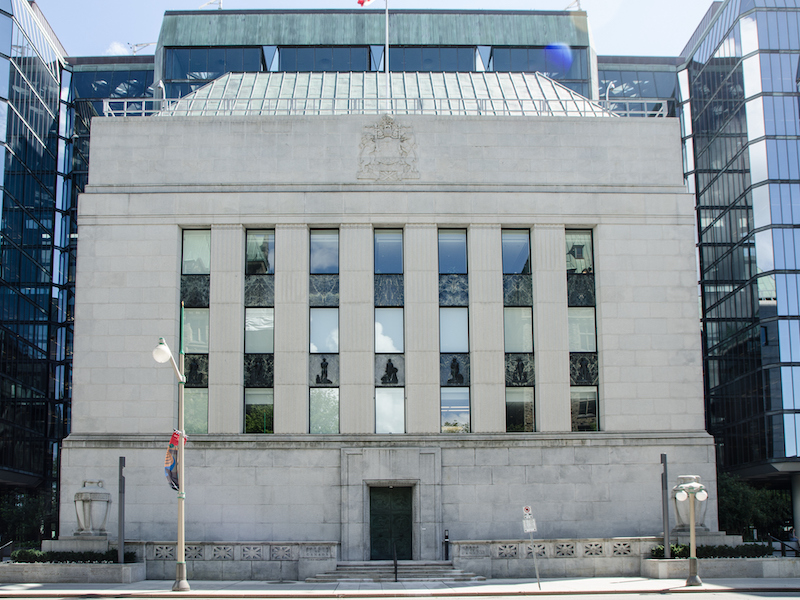
With the U.S. economy outperforming, and Canada poised to see improved growth in 2025, the outlook for the year ahead is generally positive — the chief cloud is the prospect of trade turmoil driven by the threat of hefty U.S. tariffs, says Morningstar DBRS in its latest forecast.
Heading into the new year, U.S. growth continues to surprise on the upside, largely driven by strong household consumption — and DBRS sees these trends holding up.
“We expect the economic momentum to spill over into 2025, primarily because the fundamentals for consumers look solid,” it said in its updated forecast for North America.
“A healthy labour market next year should generate steady wage growth. Household debt servicing costs remain near historic lows and easing monetary policy should support credit expansion,” it said, adding that strong equity markets have also boosted household balance sheets.
“The outlook for business investment is also constructive, as firms will likely increase equipment spending following the burst of manufacturing-related factory construction over the last three years,” it said.
Meanwhile, the Canadian economy has been relatively sluggish, and is lagging the U.S. — DBRS noted that the IMF projects that Canada will record 1.3% GDP growth this year, compared with a projected 2.8% in the U.S.
“However, Canadian growth should gradually accelerate next year,” the rating agency said, with fiscal stimulus on the way in the form of tax relief and government stimulus cheques, along with easing monetary policy.
“Lower borrowing costs and a relaxation of mortgage rules may fuel housing-related activity,” it said. “In addition, Canadian consumers are in a strong position to spend as the personal saving rate is elevated and household balance sheets are strong.”
The IMF is forecasting 2.4% growth for Canada in 2025, DBRS said, adding that it sees that forecast as, “slightly optimistic due to the rising uncertainty in global trade policy which could have a chilling effect on near-term investment.”
Indeed, the prospect of higher tariffs is, “the biggest risk to what is a generally positive growth outlook in 2025,” DBRS said.
The threat of a 25% tariff on all U.S. imports from Canada and Mexico, “would constitute a significant adverse shock to all three economies, damaging cross-border supply chains, increasing prices for consumers and weakening firms’ profitability,” the report said. “The impact would be even greater if Canada and Mexico retaliate with tariffs on U.S. exports.”
Given the deeply negative impact of such a move, DBRS said that it sees it as unlikely to happen.
“The threat can perhaps be viewed as an opening move by the incoming U.S. administration in the approaching review of the U.S.-Mexico-Canada free trade agreement, which is scheduled for 2026,” it said.
Instead, the rating agency said it believes that it’s more likely that the U.S. will set higher tariffs on imports from China in 2025, and pursue targeted tariff increases on imports from other major trading partners, including Canada.
“The macroeconomic impact of such a scenario for the U.S. and Canada would likely be modest in 2025, characterized by slightly higher inflation and slightly weaker growth than otherwise. The impact may intensify in 2026 and 2027 if additional tariffs are implemented,” it said — with the caveat that it has relatively low confidence in its expectations for U.S. trade policy.
“Tax and immigration policy changes may end up being defining features of president-elect Trump’s second term, but the economic impact of such policy changes is not likely to be felt until 2026,” it said.
Against this backdrop, DBRS expects monetary policy in Canada and the U.S. to diverge further in 2025.
Already, the Bank of Canada has cut rates more sharply than the U.S. Federal Reserve Board, and DBRS said, “We expect the pace of easing by the two central banks to differ in 2025 due to differing economic conditions in the two countries.”
“In the U.S., solid growth momentum and above-target inflation implies there is no urgency to ease monetary policy,” it said. “In contrast, Canada faces a negative output gap and benign inflation dynamics.”
As a result, it expects the Fed to cut rates by just 75 to 100 basis points from the current range of 4.5%-4.75% by the end of 2025, leaving monetary policy in restrictive territory into 2026. The BoC is expected to move into neutral policy territory in the first half of 2025.